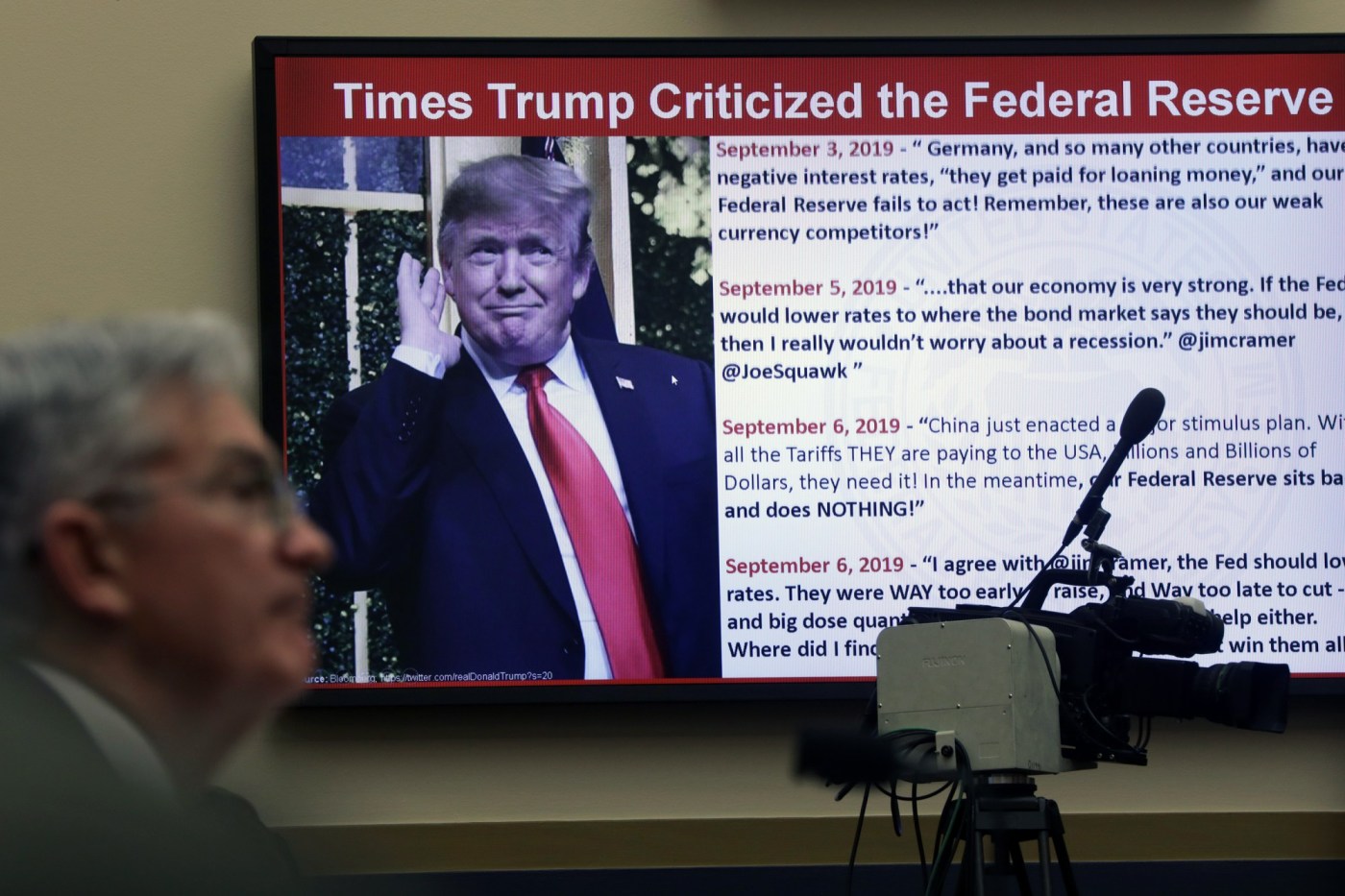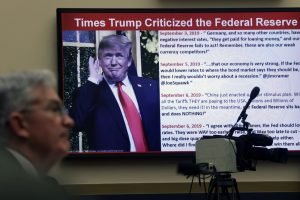
Trump’s victory casts a shadow over the Federal Reserve
Amara Omeokwe | (TNS) Bloomberg News
Donald Trump’s victory in Tuesday’s presidential contest injects deep uncertainties into the U.S. economic outlook that could alter the Federal Reserve’s policy calculus in the months ahead, while renewing questions about how fiercely he might pressure the central bank during his second term in the White House.
In his campaign, Trump promised to wield tariffs more aggressively against U.S. trading partners, deport millions of undocumented immigrants and extend his 2017 tax cuts. Those policies, if enacted, could put upward pressure on prices, wages and the federal deficit, according to many estimates.
That would complicate the Fed’s job as officials seek to lower inflation to their 2% objective while protecting the labor market. Amid that delicate task, the central bank could fall under an uncomfortable political spotlight should Trump follow his previous pattern of publicly attacking Fed Chair Jerome Powell.
Fed officials on Thursday are widely expected to lower their benchmark interest rate by a quarter percentage point, a move that will come on the heels of a half-point cut in September. They have projected one more quarter-point cut this year, in December, and an additional full point of reductions in 2025, according to the median estimate released in September.
Policymakers, however, may now approach the question of when and how much to cut more cautiously as they assess how Trump’s economic proposals will be turned into actual policies, said Derek Tang, an economist at LH Meyer/Monetary Policy Analytics.
“On the margin, they might think we might get higher inflation risk over the next few years with tariffs or lower immigration,” Tang said. “Their psychology might be, ‘By cutting a little bit more slowly, that gives us a little bit more time to observe what’s actually happening with inflation expectations and the labor market.’”
Powell will almost certainly face questions about how the election affects the Fed’s outlook when he holds a press conference at 2:30 p.m. Thursday following this week’s meeting of the Federal Open Market Committee.
The Fed chair frequently drew Trump’s ire during his first presidential term. Those barbs have continued, with Trump saying as recently as August that Powell had been “a little bit too early and little bit too late” on policy decisions.
Having a ‘Say’
Trump has also said he believes presidents should have “say” on the Fed’s interest-rate policy, and suggested policymakers acted for political reasons when they lowered rates by a larger-than-usual half percentage point in September.
In an October interview with Bloomberg News Editor-in-Chief John Micklethwait, Trump subsequently said he doesn’t think he should be able to order the Fed what to do, but has the right to comment on the direction of interest rates.
The totality of his rhetoric has nonetheless stoked speculation he could seek to curb the Fed’s autonomy and upend a decades-long practice of allowing the central bank to conduct monetary policy independently of the executive branch. During Trump’s first term, he explored firing Powell, a move that would have been unprecedented and legally questionable, according to legal scholars.
The Fed has guardrails surrounding it that could protect it against presidential interference. A president’s appointees to the Fed’s Board of Governors must be confirmed by the Senate, and Congressional committees maintain oversight of the central bank, for example. Powell and other officials have repeatedly assured the public they aim to stay out of partisan politics and don’t take political considerations into account when setting monetary policy.
Sowing Doubt
Still, a president’s public and vocal criticisms of the Fed can sow doubt, said Sarah Binder, a professor of political science at George Washington University.
“There’s certainly that structural independence,” Binder said. But “no degree of structural insulation can protect it if people begin to doubt that it’s going to do what it says it’s going to do.”
Some of Trump’s advisers have pushed back against concerns he could seek to meddle with the Fed.
“My impression: He doesn’t want to be in the room. He just wants to be a voice that’s heard,” said Scott Bessent, a top Trump economic adviser and chief executive at the hedge fund Key Square Group. “He understands that central bank independence anchors long-term inflation expectations, which anchors long-term rates,” he said in an October interview with Bloomberg News.
Kevin Hassett, who served as the chairman of the White House Council of Economic Advisers during Trump’s first term, said in an interview with Goldman Sachs released in October that suspicions of coordination between the Fed and the executive branch “should be taken seriously, and the next administration should choose a neutral Fed leadership.”
Trump’s most direct way to influence the Fed will come through appointments of key personnel in coming years. He has already said he won’t reappoint Powell, whose term as chair ends in May 2026. Fed Governor Adriana Kugler’s term expires in January 2026, while Powell’s governor slot opens up in January 2028. Trump will have the opportunity to name appointees for each of those positions.
Related Articles
4 ways in which Donald Trump’s election was historic
Rideshare drivers win right to unionize in Massachusetts after ballot question victory
Who will certify Donald Trump’s presidential win? Kamala Harris, that’s who
Donald Trump’s transition starts now. Here’s how it will work
Trump promises to bring lasting peace to a tumultuous Middle East. But fixing it won’t be easy
Multiple sources close to the Trump campaign, including Bessent, have said Hassett could be Trump’s eventual choice for chair.
The president-elect will also be able to nominate a vice chair for supervision — a powerful regulatory role that oversees the nation’s largest banks. President Joe Biden filled the post with Michael Barr, whose term ends in July 2026. Barr has drawn sharp criticism from the banking industry and Republicans over an initial proposal to boost the capital banks must hold. The Fed and other regulators are now revising the plan.
Recent holders of Barr’s position have resigned shortly after the election of a president from the opposite party, Michael Feroli, chief U.S. economist at JPMorgan Chase & Co., wrote in an October research note.
If Barr “follows this precedent after a Trump victory then the new president could quickly influence regulatory policy, even if his influence over monetary policy is less immediate,” Feroli said.
With assistance from Reade Pickert.
©2024 Bloomberg L.P. Visit bloomberg.com. Distributed by Tribune Content Agency, LLC.


